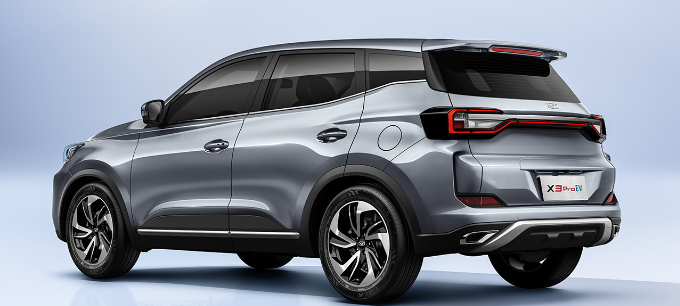When shopping for an SUV, many buyers get confused by terms like "standard SUV" and "midsize SUV"—especially when trying to figure out which one offers more space. While naming conventions can vary slightly by automakers, there are clear differences in size, interior room, and use cases between the two. Let’s break down the key distinctions to help you understand which is truly "bigger."
1. First, Clarify the Size Definitions
To compare "bigger," we start with objective measurements: length, width, height, and wheelbase (the distance between the front and rear wheels, a key factor for interior space).
- Midsize SUV: Typically ranges from 180 to 195 inches in length, 72 to 78 inches in width, and 65 to 70 inches in height. Wheelbases usually fall between 105 and 115 inches. Examples include the Toyota RAV4 (181.5 inches long) and Honda CR-V (184.8 inches long). These models are designed for daily commuting and small-family use, balancing space and maneuverability.
- Standard SUV (also called "full-size SUV" in some markets): Is noticeably larger, with lengths from 196 to 220 inches, widths from 78 to 85 inches, and heights from 70 to 78 inches. Wheelbases often exceed 115 inches—some even reach 130 inches. Models like the Ford Expedition (210 inches long) and Chevrolet Tahoe (210.7 inches long) fit this category. They’re built for maximum space and utility, not just daily drives.
2. Interior Space: The "Bigger" Difference That Matters
Size on paper translates to real-world space, and here standard SUVs pull ahead significantly—especially for passengers and cargo.
- Passenger Room: Midsize SUVs usually seat 5 to 7 people (with a third row that’s tight for adults, often reserved for kids). Legroom in the second row averages 38 to 42 inches, and the third row (if available) is around 28 to 32 inches. Standard SUVs, by contrast, comfortably seat 7 to 9 people. Second-row legroom can hit 45 inches, and third rows often have 35+ inches of legroom—enough for adults on long trips.
- Cargo Capacity: Midsize SUVs offer 30 to 40 cubic feet of cargo space behind the second row, and 60 to 70 cubic feet when the second row is folded. Standard SUVs blow this out of the water: 50 to 70 cubic feet behind the second row, and 100 to 140 cubic feet with all rear seats folded. This makes them ideal for hauling large items like furniture, camping gear, or multiple suitcases for a family vacation.
3. When to Choose Which: It Depends on Your Needs
While standard SUVs are "bigger," they aren’t always the better choice—midsize SUVs have their own advantages.
- Choose a Midsize SUV if: You drive in the city often (their smaller size makes parking and navigating tight streets easier), have a family of 3 to 5, and don’t need to haul large loads regularly. They also get better fuel efficiency (25 to 30 MPG combined) compared to standard SUVs (15 to 20 MPG combined).
- Choose a Standard SUV if: You have a large family (6+ people), frequently tow trailers or boats (many have tow ratings of 6,000+ pounds), or need maximum cargo space for hobbies like camping or DIY projects. Just keep in mind they’re harder to park and use more fuel.
Final Thoughts
To answer the question directly: Standard SUVs are bigger—in length, width, wheelbase, passenger room, and cargo capacity—than midsize SUVs. Midsize models excel at balancing space and practicality for daily use, while standard SUVs are built for "go big or go home" utility.
If you’re looking for a versatile option that blends size efficiency with modern features—especially in the electric vehicle space—consider the Kaiyi X3 PRO EV. It offers midsize SUV practicality (easy to drive in cities, ample space for small families) with the benefits of electric power, making it a smart choice for buyers who want space without the bulk of a standard SUV.

